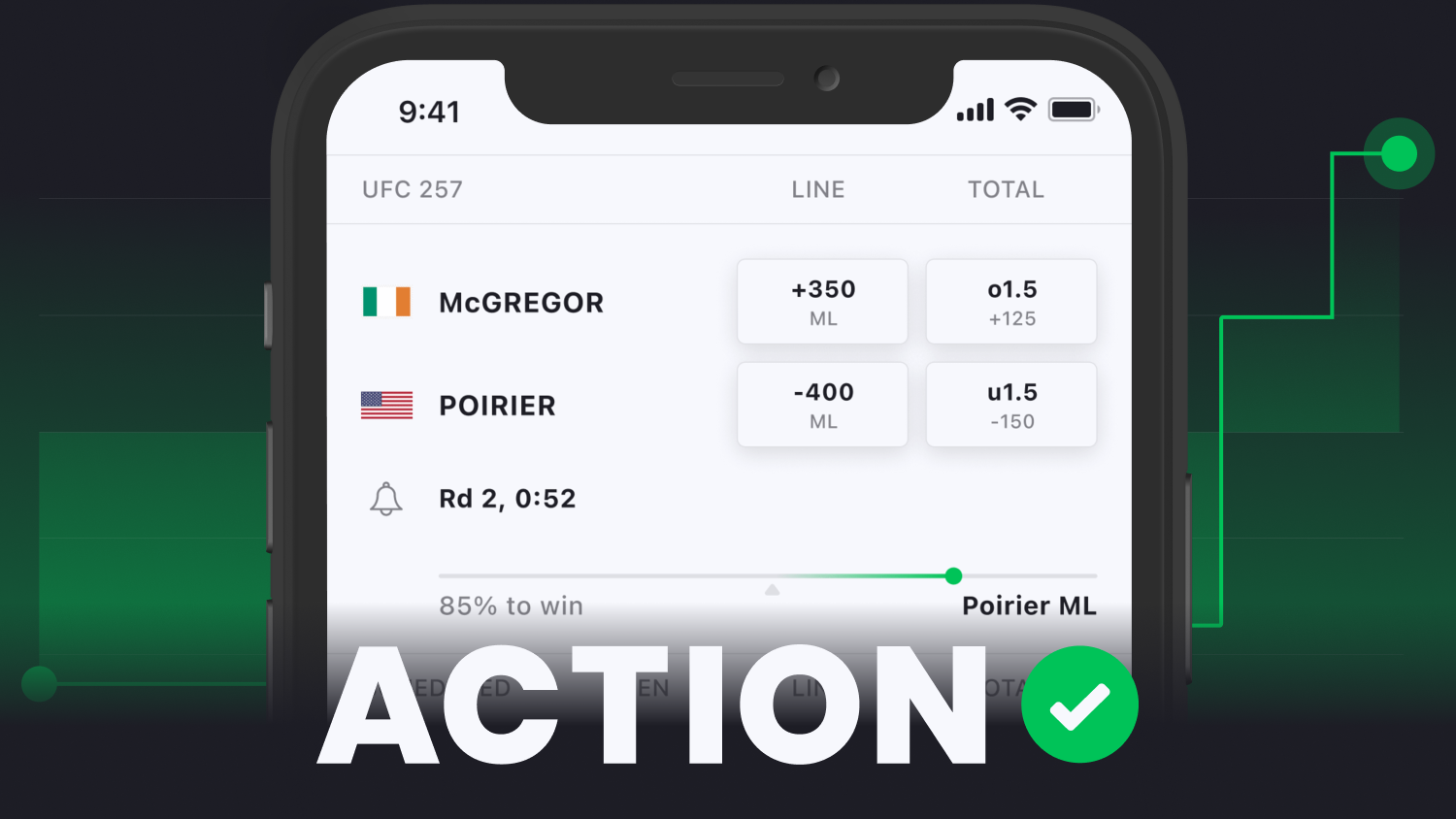The UFC’s Declining Finish Rate, and Using the Octagon Size to Handicap Fights
Jeff Bottari/Zuffa LLC/Zuffa LLC via Getty Images. Pictured: UFC Octagon
Suppose you were to project an NFL or college football game on a field that measured 80 yards long, or a basketball or hockey game on either a court or rink that was shortened by roughly one-third. A handicapper would certainly have to project for a significantly higher pace and more scoring relative to the standard-sized playing field for those respective sports in terms of a game total.
The world of MMA features cages of all various shapes and sizes, but the standard UFC Octagon has a 30-foot diameter and measures 746 square feet.
The 25-foot cage, which the promotion uses at its APEX facility in Vegas, isn't merely five-feet smaller — it's scaled-down more than 30% in terms of square footage (518), leading to significantly increased action as a result.
Dana White and the UFC have opted for the 25-foot Octagon in the Contender Series — where prospects are incentivized to win a fight by finish in front of the boss to earn a contract. Of those nearly 200 Contender Series fights, 61.9% have ended inside the distance — a 12.9% increase over the UFC's rolling five-year average finish rate (49%) — when a fighter ends the fight by knockout (KO), technical knockout (TKO), or submission.
Modern UFC Expectations
After MMA went mainstream in the mid-aughts, both the talent and training quickly improved, eventually leading to more competitive fights and fewer finishes at the sport's highest level.
By 2010, the finish rate in the UFC leveled off to roughly 49%, after ranging from 65-88% during a more violent era from 1995-2008.
Recent year-to-year fluctuations in finish rate have since been blamed on a variety of factors other than variance, including, for example, the number of fights occurring in each weight class.
If there are 60 heavyweight fights and 40 lightweight bouts in one year, and the opposite number in either weight class the next year, that could throw off the yearly rates by a point or two in either direction.
However, I can't ignore the outlier drop-off in finish rate in 2019, especially after considering that the 2020 APEX data might have disguised the entire year as a regression to the mean in finish rate.
Rather than positive regression,we saw the continued decline of finishes in 30-foot cages — and will continue to see a consequential increase in the number of UFC fights ending via decision.
2020 Results
In 2020, 208 out of 456 (45.6%) UFC bouts took place inside of a 25-foot cage at APEX — and the finish rate (56.3%) in the smaller Octagon was substantially higher than it was for the 107 fights (40.1%) that took place before the pandemic — or the 141 fights that took place in Jacksonville or Abu Dhabi (47%) during the pandemic — all of which were contested in 30-foot cages.
Finish rates at APEX were higher across almost every weight class, but there's some further indication that the numbers from Las Vegas are a bit padded too:
It's worth noting that the fight cards at APEX faced an unprecedented number of cancellations and late replacements, which could partially explain the incredibly high rate of prelims (64 of 103, 62%) and catchweight fights (19 of 27, 70%) that ended via finish in that venue.
Conclusions
Last year, the expected finish rate for a UFC fight inside a 30-foot cage was 43.9% — but that number was 12.4% higher (56.3%) in the 25-foot cage; not so dissimilar from the 12.9% increase in Contender Series finishes relative to overall UFC finishes in the past five years.
If you restrict yourself to the pandemic-era fight data, which only includes bouts in empty arenas where competitors could hear all of their coaches' instructions (a huge advantage with good coaching), the disparity in finish rate decreases to 9.3%. And if you compare the APEX finish rate to the rolling five-year UFC average of 49%, the differential is just 7.3%.
I'm not sure that that perceived "average" finish rate over the past decade – 49% ☺ is the true average anymore, however.
If you combine the 2019 and 2020 data from 30-foot Octagons, the new average finish rate could be closer to 46-47% for the UFC.
As I mentioned previously, the number of fights at each weight class from year to year influences the overall year-end data sample, and more combined fights are occurring at men's flyweight and in all women's divisions in the UFC than ever before. Since those fights lead to a lower percentage of expected finishes than larger weight classes, a decrease in the overall finish rate for the promotion shouldn't come as a complete surprise.
But given the data, I would have to expect the difference in finish rate from a 25- to a 30-foot Octagon to be around 10% (roughly 56% vs. 46%) going forward, even after accounting for the potential low-level talent that made its way onto the UFC stage at APEX, both at the last minute and out of necessity, over the past year.
How would you rate this article?





